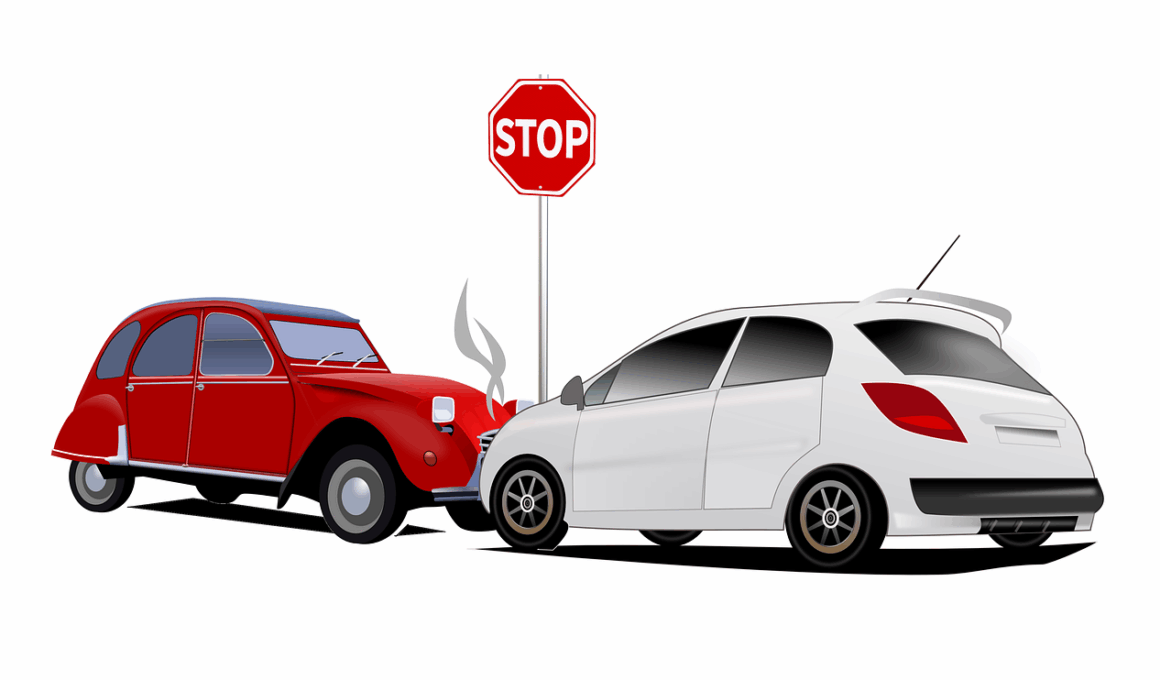What to Do After an Auto Accident: Insurance Steps Explained
After experiencing an auto accident, the first step is to assess injuries and damage. Ensure safety by moving vehicles to a secure area if possible. Once everyone is safe, call 911 to report the accident, especially if there are injuries. The police will create an official report, which is crucial for insurance claims. Exchange information with the other driver, including names, addresses, phone numbers, and insurance details. Also, gather contact information from any witnesses. Taking photographs of the scene and vehicle damage is beneficial and can support your claim later. If you suspect the other driver might be underinsured or uninsured, it’s essential to protect yourself through your policy. Do not admit fault at the scene, as statements can affect your insurance claim. After leaving the accident scene, promptly contact your insurance company. Provide them with all collected information, including photos and the police report. This ensures your claim process starts swiftly. Be prepared to discuss the details of the accident with your agent for a thorough review.
Once you report the accident to your insurance company, they will guide you through the claims process. This typically involves an adjuster evaluating the damages and determining fault based on the information provided. The adjuster will review the police report, witness statements, and your photographs. They may also contact the other driver’s insurance company if necessary. Keep detailed records, including the claims number, adjuster contact information, and any correspondence with your provider. Understand your coverage and deductible; this knowledge helps manage expectations about repairs and reimbursements. Your policy may include coverage for rental cars while your vehicle is being repaired. Inquire about this option if needed. Besides damages, consider personal injury claims for medical expenses or lost wages. Document all related medical treatment and costs to support your claim fully. Once repairs are authorized, choose a reputable auto repair shop, preferably one recommended by your insurer. Stay in contact with your adjuster as repairs progress, ensuring the work aligns with your policy’s coverage. Thoroughly review all settlement offers before accepting anything; ensure they cover all incurred costs and damages.
Understanding Your Auto Insurance
Understanding your auto insurance policy is essential after an accident. Policies can vary greatly, with coverage types like liability, collision, and comprehensive being common. Liability insurance pays for damages to another party if you are at fault. Collision coverage, however, helps repair your vehicle regardless of fault. Comprehensive coverage protects against non-collision incidents, such as theft or weather damage, providing peace of mind. Familiarize yourself with your specific coverage limits, as exceeding them can lead to out-of-pocket expenses. Also, review your policy for any exclusions which might affect your claim. It’s essential to know how your deductible works—this is the amount you pay before your insurance kicks in. Additionally, each policy has a limit on claims, impacting compensation. Make sure to understand how these factors influence your financial responsibility. If you’re unsure, don’t hesitate to ask your agent for clarification. Regularly reviewing your policy helps you stay informed about adjustments or updates in coverage terms. Finally, if your policy doesn’t adequately meet your needs, explore options for upgrades or additional coverage.
Filing a claim after an auto accident involves detailed attention to ensure a smooth process. Start by gathering all necessary documentation, including the accident report, photographs of the damage, and any medical bills incurred. After the initial contact with your provider, expect an insurance adjuster to reach out for a detailed account of the event. Respond promptly to their inquiries, as delays can hinder your claim. Be prepared to present all listed documents, along with any additional evidence showcasing impacts, like missed work or medical treatments. This thoroughness aids in validating your claim’s legitimacy. Follow up periodically with your adjuster to ensure your claim progresses. Understand the time frame for the process; it can vary based on claim complexity. Determine if there’s a need for additional investigations by the insurer, especially in contested fault situations. Patience is key, but do not hesitate to advocate for yourself if progress stalls. Once a resolution is reached, carefully review the settlement offer. If it doesn’t seem adequate, initiate negotiations rather than accepting the first offer promptly, as this can significantly affect your recovery.
Medical Coverage Considerations
Medical coverage is a critical component following an auto accident. Regardless of fault, having sufficient medical insurance can alleviate financial burdens from unexpected healthcare expenses. Many auto insurance policies include Personal Injury Protection (PIP) that covers medical bills and certain other expenditures after an accident. Familiarize yourself with what’s included in your coverage; this may range from hospital costs to rehabilitation expenses. After the accident, you should seek prompt medical attention for any injuries, even if they seem minor. This ensures comprehensive documentation of your condition, which is crucial for claims processing. Keeping detailed records of all medical treatments, appointments, and bills strengthens your claim. If you’re unable to work due to injuries, document your lost wages, as these can also be compensated through your policy. If disputes arise over medical expenses with the insurance company, gather supporting paperwork and consider seeking legal advice. An experienced attorney can help negotiate effectively or evaluate your case for potential legal action against another party if warranted. In understanding all this, you ensure that you get the necessary resources to recover fully from your injuries.
Once your auto insurance claim is filed, it’s important to maintain communication with your provider. Ask questions whenever unclear about the process or next steps. There may be further information required for clarification. After a thorough evaluation of your situation, your adjuster will present a settlement offer based on your coverage and the damages assessed. They might contact you to negotiate, discussing the figures based on their findings. If their offer is below your expectations, don’t accept it hastily. Instead, gather your documents and provide a counteroffer. Here, presenting solid evidence will elevate your negotiating power; rectifications can occur through documented injuries or losses. If negotiations lead to an agreeable settlement, the discussion will proceed toward receiving payment. Ensure you understand how compensation works; some claims may be paid directly to repair shops or hospitals rather than to you. After accepting a settlement, the process is usually deemed final, so read all documentation carefully before signing. Disputes over amounts can arise later only if the insurer committed fraud or acted in bad faith, opening the door for legal recourse to ensure fair compensation.
Preventing Future Accidents
After navigating the post-accident claims process, it’s wise to consider steps to prevent future accidents. Driving defensively is key—always be aware of your surroundings, maintain a safe distance, and adhere to traffic signs and signals. Driver training courses can provide enhanced skills and knowledge, potentially lowering insurance premiums in the long run. Staying updated on vehicle maintenance is crucial; regularly check brakes, tires, and lights to ensure they are functioning correctly. Additionally, using technology wisely helps. Many apps monitor driving habits and provide feedback on how to improve. Distracted driving is a major contributor to accidents, so limit mobile phone use while driving. By setting phone calls to voicemail or using hands-free devices, you can significantly reduce distractions. Establishing safe driving habits among family members, especially new drivers, promotes a culture of safety. Encourage open discussions about good practices and the importance of staying focused while driving. Joining community initiatives focused on road safety can also enhance awareness and share valuable resources. Through all these methods, you can contribute positively to accident prevention and foster safer roadways.
Finally, it’s important to reflect on what you have learned through the experience of filing an auto insurance claim after an accident. Each incident offers lessons that can be invaluable for future reference. Always remember to document everything, from the moment of the accident to the interactions with your insurance company; this diligence pays off in times of need. Review and update your insurance policies regularly to ensure that your coverage fits your current lifestyle and needs. Additionally, vehicle safety ratings and improved technologies are ever evolving, so consider these during your purchase decisions. Equipping your vehicle with advanced safety features can not only provide back-up in accidents but also often lower your insurance premiums. Utilize educational resources on traffic laws and safe driving practices to further enhance your knowledge. Moreover, staying in good communication with your insurance agent can provide insights into new coverage options or discounts that may be applicable to your situation. By approaching your auto insurance with a proactive mindset and an understanding of its fundamentals, you can navigate challenges more effectively and foster greater peace of mind on the road.


